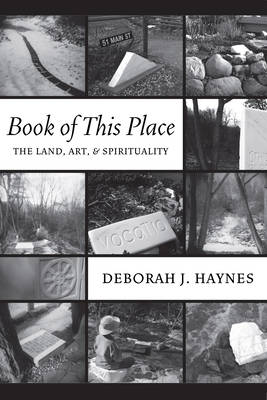
Je cadeautjes zeker op tijd in huis hebben voor de feestdagen? Kom langs in onze winkels en vind het perfecte geschenk!
- Afhalen na 1 uur in een winkel met voorraad
- Gratis thuislevering in België vanaf € 30
- Ruim aanbod met 7 miljoen producten
Je cadeautjes zeker op tijd in huis hebben voor de feestdagen? Kom langs in onze winkels en vind het perfecte geschenk!
- Afhalen na 1 uur in een winkel met voorraad
- Gratis thuislevering in België vanaf € 30
- Ruim aanbod met 7 miljoen producten
Zoeken
€ 74,95
+ 149 punten
Uitvoering
Omschrijving
The title of this engaging work emphasizes that the author lives, works, and creates art in this place--a particular site in the foothills of the Colorado Rocky Mountains. The subtitle indicates that place is the arena for investigating engagement with the land and nature, art and creativity, and spiritual life. By exploring the significance of place in our fragmented world and by using her artistic practice as an example, the author hopes to offer readers new definitions of the interrelationship of religion and art. Haynes is the first to examine the intersection of these three themes, which may be variously defined. First, the land and nature provide the literal site for the book, and the language of ecology is woven throughout. In the face of contemporary global crises, Haynes believes that we have a moral imperative to address how we live and work in the physical environment. Second, visual art, creativity, and the creative process are discussed using historical and contemporary examples. Haynes is a philosopher of art and an artist, whose primary creative work involves carving marble and drawing. Using her stone sculptures to frame the book's chapters, she takes readers on a meandering journey into the history, philosophy, and practice of art. Third, the religious and spiritual life is highlighted with examples from both her practice of yoga and Buddhist meditation as well as from her work with hospice patients.
Specificaties
Betrokkenen
- Auteur(s):
- Uitgeverij:
Inhoud
- Aantal bladzijden:
- 212
- Taal:
- Engels
Eigenschappen
- Productcode (EAN):
- 9781498253765
- Verschijningsdatum:
- 1/09/2009
- Uitvoering:
- Hardcover
- Formaat:
- Genaaid
- Afmetingen:
- 178 mm x 229 mm

Alleen bij Standaard Boekhandel
+ 149 punten op je klantenkaart van Standaard Boekhandel
Beoordelingen
We publiceren alleen reviews die voldoen aan de voorwaarden voor reviews. Bekijk onze voorwaarden voor reviews.









